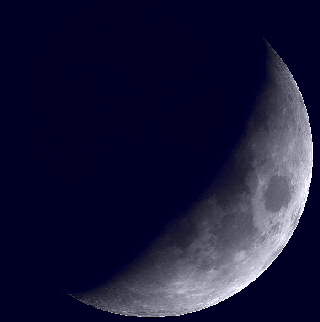K3PGP.Experimenter's.Corner
![]()
K3PGP.Experimenter's.Corner
![]()
Home Astronomy Bicycle Construction Laser Moonbounce Software Guest Misc
Optical Echoes from the Moon
Without the use
of Retro-Reflectors!
(May 1962)
NOTE: I have no idea why so many people are linking to this page in reference to UHF TV reception via EME ( Earth Moon Earth or Moonbounce - reflection from the moon) but if that is what you are seeking you will find the article you are looking for HERE! For additional information on laser EME (Moonbounce) check TARGETS.
Experiments have been conducted to focus pulsed optical radiation on to the surface of the Moon and to detect the echoes.
A ruby optical maser radiating pulses of approximately 50 joules energy, 0.5 msec. duration, at 6943 A was used as the source. The transmitting optical system included a Cassegrain telescope of 12-inch diameter. The echoes were received on a Cassegrain telescope of 48-inch diameter, passed through an interference filter of 7A band-width and were detected with a photomultiplier tube of spectral response type S-20 cooled to liquid nitrogen temperature. The field of view of the receiving telescope was 0.2 milliradians.
The photoelectron count obtained in a 0.5 msec. interval at the expected time-delay was contemplated with the counts obtained in 0.5 msec. intervals where no echoes would be expected and where the only relevant contributions to the count were scattered light (photoelectric dark current was negligible).

 |
The moon as it appeared on the night of May 9th, 1962 |
The experiments, conducted at
Lexington, Massachusetts, on May 9, 10, and 11, 1962 gave
positive results as indicated in Table 1 above.
Column 3 indicates the number of consecutive flashes utilized; column 5 is the average number of photoelectrons due to noise in a 0.5 msec. interval; column 6 is the standard deviation of the noise count; column 7 is the average count in the 0.5 msec. interval where an echo was expected.
The expected time delay of the signal was computed from ephemeris data and the position of the illuminated area on the Moon. Column 4 gives the number of range-intervals per trace used to obtain the data in columns 5 and 6.
I thank J. Daley, jun., of
Lincoln Laboratory, for help in setting up and operating the
telescopes, and G. Hardway and S. Kass, of the Raytheon Co., for
help in the use of the maser. The work was supported in part by
the U.S. Army Signal Corps, the Air Force Office of Scientific
Research, and the Office of Naval Research.
Louis D. Smullin
Giorgio Fiocco
Research Laboratory of Electronics,
Massachusetts Institute of
Technology,
Cambridge, Mass.
|
1962 - Project "Luna See," headed by Professor Louis D. Smullin (left) and Dr. Giorgio Fiocco (right), successfully demonstrated high-power optical maser technology by being the first to bounce a laser beam off the moon's surface. High-intensity red light flashes were created by an optical maser (laser), sent through a transmitting telescope to the moon's surface, and detected with an optical receiver. This was the first time that space had been spanned by a laser light. Dr. Stanley Kass (center) from Raytheon discusses the experiment with Professor Smullin. |
See if you can locate the craters mentioned above!
 (57k)
Download - An excellent Moon Map program! (moonma.com)
(57k)
Download - An excellent Moon Map program! (moonma.com)
Home Astronomy Bicycle Construction Laser Moonbounce Software Guest Misc
Contents of this website are ©1997 of K3PGP and of the originating authors.